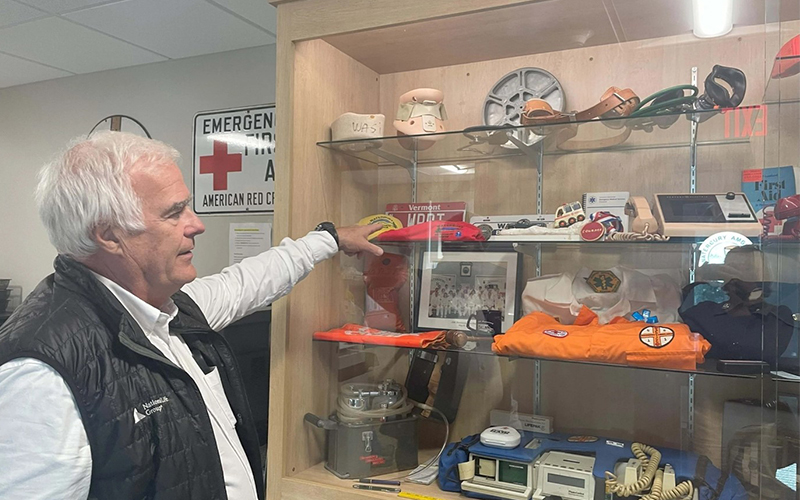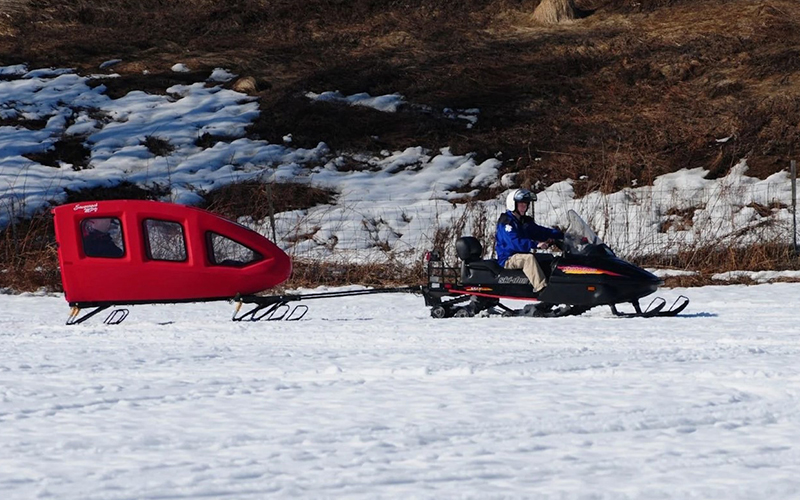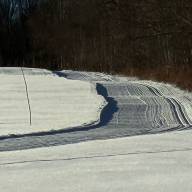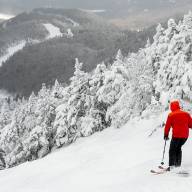Photo: Waterbury Backcountry Rescue file photo by David Cutler
A few weeks ago, a young man wandered off the Bamforth Ridge Trail on Camel’s Hump. At around 3 a.m., his cellphone battery was exhausted, and he was guiding himself by the cardiac monitor light on his smartwatch.
Waterbury Backcountry Rescue Team was called out around 1 a.m. to find the missing hiker. The team searched the trails for hours, when one member saw that flashing green cardiac light in the darkness. The team located the lost hiker and guided him back to the parking lot.
As October began, the team had responded to 15 calls so far this year, compared to 10 in all of 2024, according to Brian Lindner, a founding member of the group.

“The numbers just change drastically,” Lindner said. “2025 is looking to be a record year. We’ve done 15 so far, and we're not at our busy season yet.”
Whether it’s frozen boots or broken tibias, Waterbury Backcountry Rescue Team is prepared to respond to any kind of backcountry crisis. The organization has been dealing with emergencies in Waterbury’s outdoor recreation areas since 2002, rescuing almost 300 hikers, skiers, and mountain bikers to date.
Waterbury Backcountry Rescue is made up of 21 volunteers, all of whom are extensively trained to respond quickly and safely to crises on the summits of nearby peaks in the Green Mountains, such as Camel’s Hump, Mt. Hunger, and Bolton Mountain.
The group was founded to fill the need for specialized backcountry rescues. Until it was formed, the Waterbury Fire Department was responsible for these rescues.
The backcountry rescue team was formed as a special unit of Waterbury Ambulance Service, Inc. The nonprofit EMS outfit has been around since 1971, serving Waterbury, Duxbury, and Moretown, and responding to assist neighboring EMS agencies as needed.

Backcountry rescues often require more than a dozen responders to execute properly. The rescues are highly technical and require precision, training, and equipment.
“It was just willy-nilly,” Lindner said of those early days. “We had the wrong people there in the wrong places.”
Heidi Higgins-Cutler, an EMT and longtime member of the backcountry unit, joined Lindner to discuss the backcountry team’s mission. “The firefighters are firefighters, and they were the ones getting called to respond to lost and injured people outside of their typical urban terrain,” Higgins-Cutler recalled.
On a recent afternoon, Lindner and Higgins-Cutler shared stories of their rescues while they sat in Waterbury Ambulance Service’s newly built Steele Rescue Station. They were interrupted by the chatter of walkie-talkies and muffled radio calls.
An EMT with Waterbury Ambulance Service, Inc. since 1982, Higgins-Cutler says that she has seen the need for backcountry response grow as more people are getting involved with the outdoors. “I got involved to be a caregiver, and to help carry where I can,” she said. “I’ve spent a lot of time on the mountain, and it holds a special place for me, so backcountry does as well.”
Lindner has been a first responder since 1986. His father worked as the patrol director at Stowe Mountain during Linder’s childhood. “I actually remember getting dragged along on some of those rescues by him. I guess it was just the natural thing to do,” Lindner said.
His most memorable rescue involved a father and three children who got lost backcountry skiing at Mad River Glen, Lindner recounted.
It was December 2002 when the group took the last chair up. They got lost among the trees, skiing down the backcountry. They spent the evening huddled under a makeshift shelter of spruce boughs and snow, Lindner recounted.
Hungry and freezing, the group called 911. Waterbury Backcountry Rescue Team arrived at the scene at 3:27 a.m. and guided the lost skiers to safety.
More than half of the calls the team receives are for searches, and team members respond quickly, Lindner said. “We’ve got a team in the woods, on the fly, and moving, within the first hour. That is not standard procedure,” Lindner said.
In January 2011, a couple was skiing and snowboarding on Camel’s Hump. The pair got separated, and the woman got trapped in a ravine. The couple called 911, and the young woman was located, well after sunset, by a Vermont National Guard helicopter. Unhurt, the woman was guided out of the ravine by the Waterbury team.
“We respond to a lot of those calls, where they are trapped by darkness,” Lindner said.
In fall foliage season now and as winter begins, Lindner stressed the importance of preparation by those heading out into the backcountry.
“The big thing we see is people going up on a warm sunny day, it's 2 in the afternoon… It's just wonderful. And they get up there, and this time of year, it gets dark quicker. It's just being totally unprepared for the changing season,” Lindner said.
Higgins-Cutler adds that darkness is not the only potential hazard. “The folks who go with no water, they go with no food, no extra clothes, or 15% on their phone battery. Then, they are surprised when it takes us an hour and a half to get to them,” she said.
Higgins-Cutler and Lindner say that hydration and warm clothing are non-negotiables as the seasons change.
“Headlamps are huge, fluids are huge, extra clothing is huge,” Lindner said. “Lone hikers are frequent; unprepared hikers are constant.”
Community News Service is a University of Vermont journalism internship that produces local news coverage for Vermont news outlets, including The Valley Reporter.
You might also like














